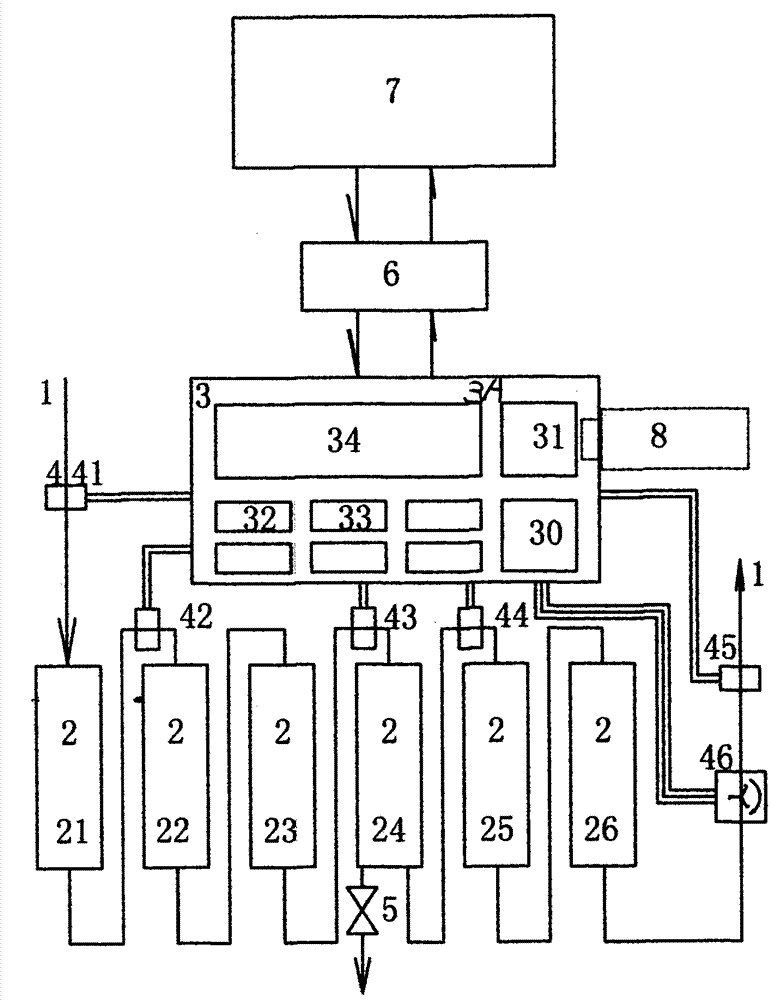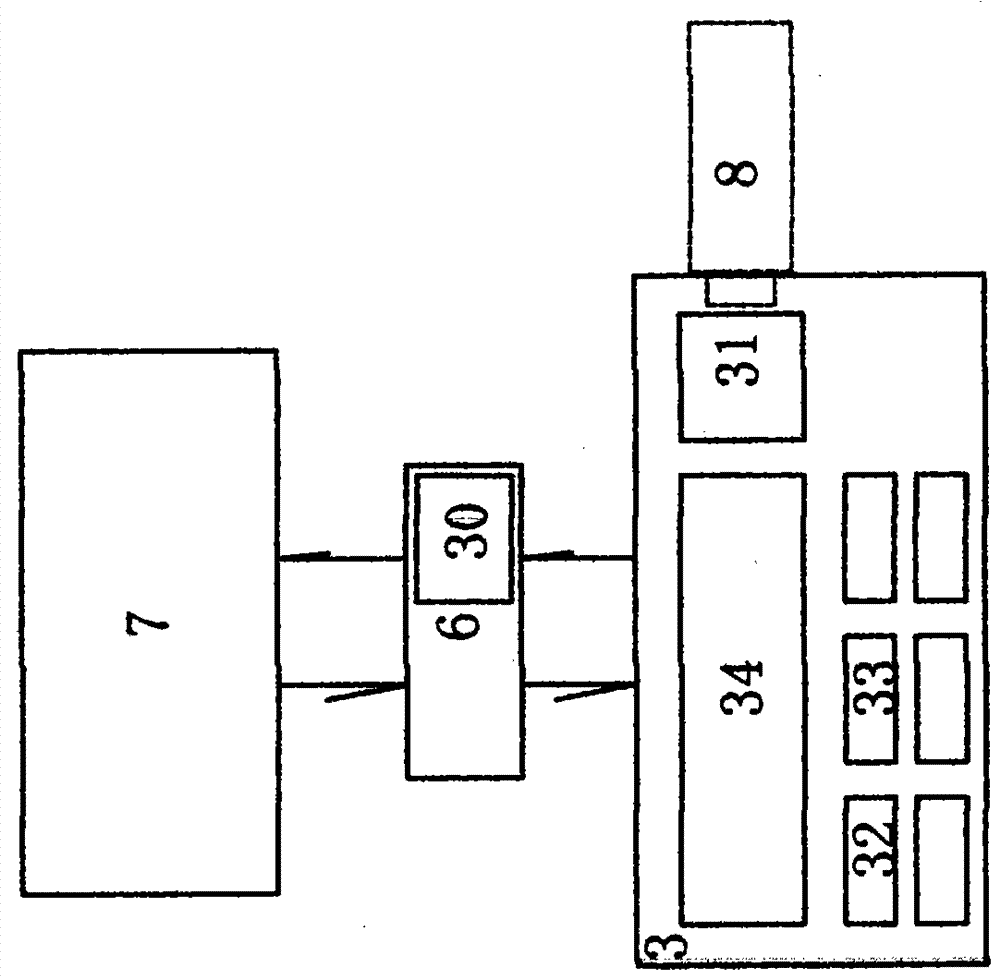Data transmission method for monitoring device of water purifier and household electrical appliance with remote terminal
A data transmission method and remote terminal technology, which is applied in the field of remote transmission of operation monitoring data of water purifiers and household appliances, can solve problems affecting the upgrading of household appliances, and achieve the effect of improving the drinking water treatment effect
- Summary
- Abstract
- Description
- Claims
- Application Information
AI Technical Summary
Problems solved by technology
Method used
Image
Examples
Embodiment 1
[0052] Example 1. The machine is provided with two detective devices 4, the monitoring device 3A of the comprehensive alarm mode and the water purifier filter channel formed by six filter gallbladders. The two detectors 4 are TDS probes 41 and 44, which are respectively set in the primary filter gallbladder inlet pipeline and the fine filter gallbladder outlet pipeline, constituting the basic monitoring and comparison system of the machine filter channel. The filtering effect of the machine can be clearly seen by comparing the TDS data in the water outlet pipeline of the fine filter gallbladder with the TDS data in the water inlet pipeline.
[0053]As an improvement to the monitoring device, a flow sensor 46 as a detector is added in the water outlet pipeline of the machine to monitor the accumulated water flow of the filter channel to form a standard monitoring and display system. On the basis of controlling the filtration effect, based on monitoring the TDS data in the outl...
Embodiment 2
[0072] Example 2. The monitoring device of the machine is provided with six detectors, including a flow sensor 46 and five TDS probes 41, 42, 43, 44, 45. The monitoring device monitors, stores, and displays five groups of total dissolved solids TDS monitoring data in the same batch of samples, as well as the water flow rate data of the corresponding filter channel, or the accumulated water flow data of the filter channel that increases with the water passing time . For the number of samples taken in a certain batch, relevant monitoring data can be found in the five sets of monitoring data. Therefore, it is possible to horizontally compare the soluble total solids comparison data of the same batch at different positions corresponding to the same detection time, and to judge the condition of the filter material layer of the relevant filter gall 2, and to vertically compare the same position corresponding to the accumulative increase of water passing time. The total dissolved s...
Embodiment 3
[0094] Example 3. Install monitoring devices with detectors and data storage systems, user code encoding systems, and data transmission devices on household appliances including water purifiers, refrigerators, washing machines, televisions, and water heaters. Wherein, the monitoring device processes the monitoring data obtained at the key positions tracked and monitored by each detector during the operation of the household appliance to form the monitoring data of the household appliance, and stores the data in the data storage system; the monitoring data At least including but not limited to the temperature comparison data of different batches before and after the same position, or the driving current comparison data corresponding to the different batches before and after the same position, or corresponding to the different batches before and after the same position The comparison data of the driving voltage, or the data corresponding to one of the four preset data of the mon...
PUM
 Login to View More
Login to View More Abstract
Description
Claims
Application Information
 Login to View More
Login to View More - R&D
- Intellectual Property
- Life Sciences
- Materials
- Tech Scout
- Unparalleled Data Quality
- Higher Quality Content
- 60% Fewer Hallucinations
Browse by: Latest US Patents, China's latest patents, Technical Efficacy Thesaurus, Application Domain, Technology Topic, Popular Technical Reports.
© 2025 PatSnap. All rights reserved.Legal|Privacy policy|Modern Slavery Act Transparency Statement|Sitemap|About US| Contact US: help@patsnap.com


